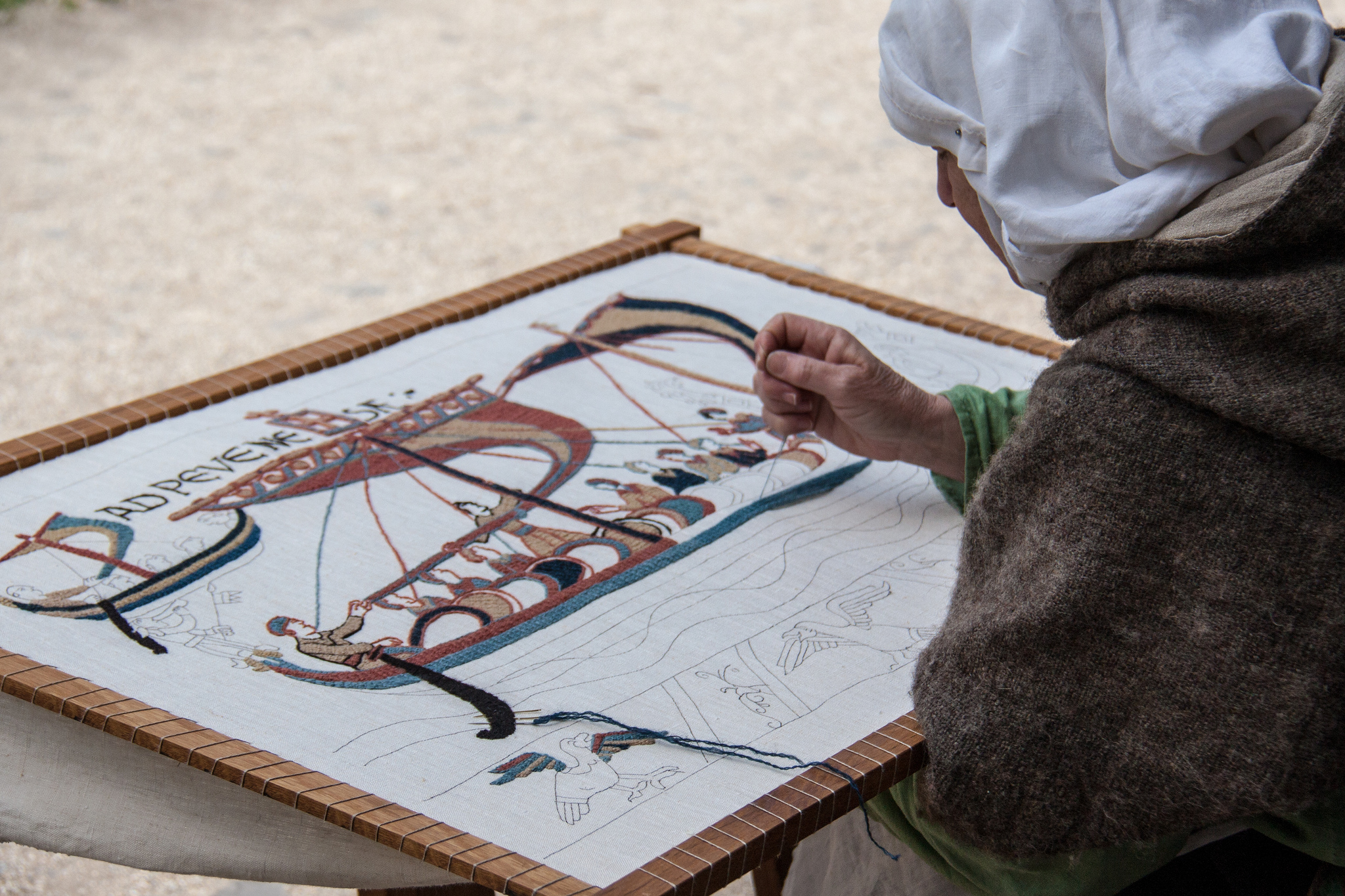
17 Jun Did You Know? The History of Embroidery
If you’ve ever sewn a button on a shirt or jacket, you probably gained a greater appreciation for needlework. It’s tedious and time-consuming. It might also result in injury to one or more of your fingers. And that was just for a button. We often take for granted what it would be like to produce intricate embroidery designs without the assistance of modern machinery. Beyond that, we would be appalled to pay top dollar for it.
What Is It?
The word embroidery usually makes reference to a substrate that has been decorated with needle and thread. The substrate could be a textile or even leather. Results vary from intricate patterns to picture-like compositions.
Ancient Embroidery
Some of the oldest examples of embroidery go back hundreds (if not thousands) of years before our Common Era. Asia, Europe, and northern Africa have all discovered examples of ancient handmade embroidery. Evidence has been found that indicates ancient Greek, Babylonian, and Syrian cultures all embroidered textiles. In fact, fine linen and needles were discovered in Egyptian tombs dating to around 3400 B.C.
The evidence that ancient cultures embroidered should not surprise us. They were people like us. They had to find practical solutions to meet their needs of clothing and other textile goods. But as time went on, the application of embroidery went from those humble beginnings to much more extravagant designs.
Embroidery of the Middle Ages
During medieval times, the Church wielded much money, power, and influence. It had a large collection of embroidered textiles, including vestments. The noble and royal ones of the time also took great interest in embroidered goods. Historical documents reveal that this type of garment was something specifically requested by the elite.
Opus Anglicanum generally refers to the embroidery originating in England during the Middle Ages. This type of embroidery peaked in European popularity between 1250 and 1350 C.E. Even the Vatican collected it and viewed it with a high importance similar to what fine paintings would garner.
During this period, the Chinese also continued their development of embroidered goods which dated back to at least the Han Dynasty. They incorporated silk thread, valuable stones, and pearls. Early in the 12th century, Emperor Hui Zong even founded a bureau dedicated to embroidery, Wen Xiu Yuan.
Embroidery of the 15th to the 17th Centuries
As the medieval times came to a close, competition from Italian silk and velvet patterned fabrics pushed embroiderers to simplify their techniques and speed up their processes. In urban areas, professional workshops (usually found in London) provided some of the best examples of 15th century embroidery.
Embroidery was a symbol of wealth throughout Europe in the 1500s and 1600s. It was found on clothing, furnishings around the home, and covers of books. Women in particular were drawn to needlework. While many women enjoyed doing it themselves, the wealthy could hire professional embroiderers. The large number of amateur needleworkers actually resulted in some healthy competition for the professional workshops of the time.
The more complexity a design offered, the better and more prestigious it was. Few could do the more intricate patterns, though. This situation eventually resulted in the development of pattern books which would guide a needleworker in creating the more difficult pieces. A good number of these antique pattern books are still available for viewing today. For example, the National Art Library of the Victoria and Albert Museum in London has some 60 original pattern books from this period.
Modern Embroidery
The 19th century saw a switch from needlework by hand to needlework by machine. Steel needles developed and new techniques continued to progress as the industrial revolution pushed on.
When the computer age came on the scene, patterns could be digitized inside software and produce embroidered goods of all kinds. We have thread made of cotton, rayon, wool, linen, and silk. New techniques have been developed. For example, ribbon embroidery needles ribbon, embroidery floss, and perle cotton into gorgeous motifs and patterns. Also, surface embroidery like couching (for gold work) and laid-work create patterns that are stitched and laid on top of a substrate (instead of going through it). And the canvas work technique allows for a finished good to be more sturdy and significant than was previously possible.
Embroidery of our day has another big advantage: the internet. Patterns and kits are available at the touch of a button. No need to buy a big, expensive pattern book with only a small selection to pick from. The worldwide web has enabled influences on embroidery to stretch from one end of the earth to the other.
So, while the ancient needleworkers would laugh as we prick our fingers trying to reattach a button, they would be amazed at the advanced embroidery work that technology has enabled. And it can all be had at prices within reach of anyone.
——————————
Sources:
Photo credit: Hans Splinter / CC ND 2.0




No Comments